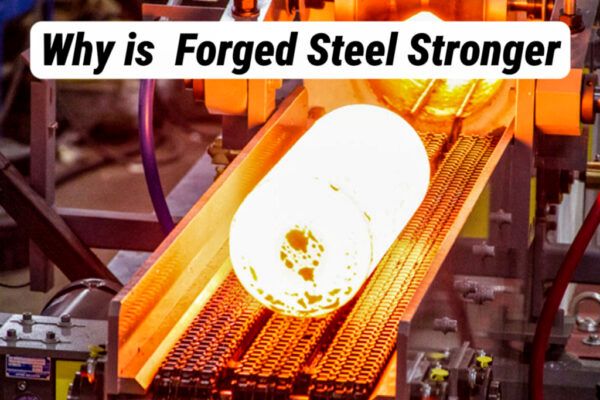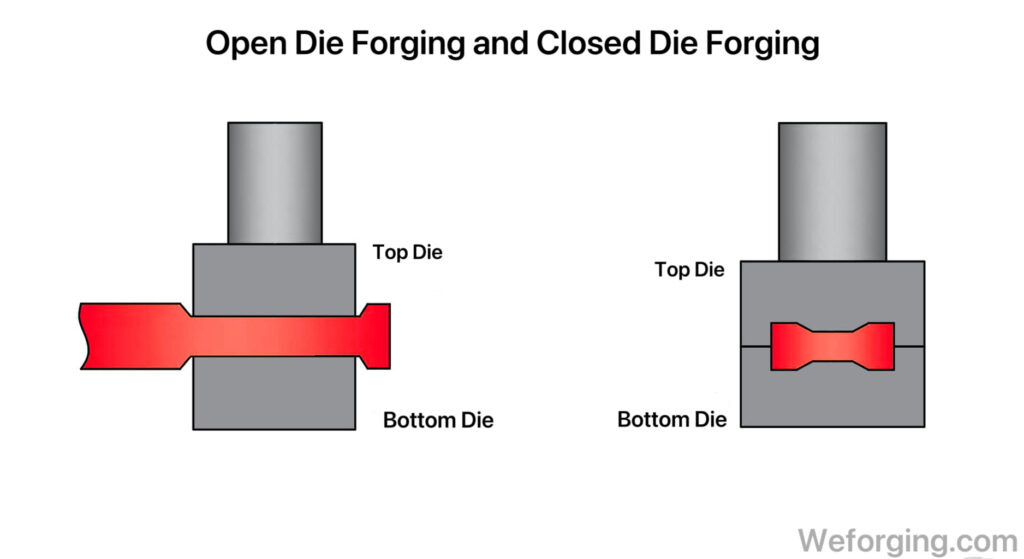Why is Forged Steel Stronger?
Understanding the Strength Behind Modern Forging Processes
When it comes to modern industrial manufacturing, few materials are as essential as steel. Yet not all steel is created equal. Many buyers, engineers, and procurement specialists often ask: Why is forged steel stronger than cast or machined steel? At Weforging Manufacturing, we specialize in delivering high-strength forged steel components that exceed international standards. This article explains why forged steel outperforms in strength, durability, and reliability.

What is Steel Forging?
Steel forging is a manufacturing process that uses localized compressive forces to shape metal. Unlike casting, where molten steel is poured into a mold, forging applies mechanical force to transform solid steel into the desired shape. Common methods include open-die forging, closed-die forging, and ring forging. This process aligns the steel’s internal grain structure, which is the key to its superior strength.The forging ratio of this process significantly enhances the material’s density and reduces porosity and other phenomena, which is unmatched by other processes.

Grain Flow: The Secret to Strength
One major advantage of forged components is the improved grain flow. When steel is forged, its grains follow the shape of the part rather than being random as in castings. This directional grain structure greatly increases tensile strength and resistance to impact. For example, a forged gear can handle higher loads and fatigue cycles than a comparable cast gear.
Process | Grain Structure | Strength | Applications |
Casting | Random | Medium | Low-stress, non-critical parts |
Machining Only | Cut Grain | Medium | Standard fasteners, fittings |
Forging | Directional | High | High-performance shafts, fasteners, gears |
Reduced Defects and Porosity
Forged steel has significantly fewer internal voids and porosity compared to castings. During forging, the compressive force eliminates cavities and refines the microstructure. This results in greater structural integrity, which is crucial for safety-critical applications in aerospace, oil & gas, and heavy machinery.
Superior Mechanical Properties
Forging can achieve higher strength-to-weight ratios than other methods. Heat treatment and mechanical machining after forging further improve the part’s hardness, toughness, and fatigue resistance. CNC machining is often used for final finishing, ensuring precise tolerances without compromising the forged structure.Moreover, the workpieces after forging heat treatment are very beneficial for the subsequent machining and assembly stress, avoiding some application interferences.
Applications of Forged Steel
At Weforging Manufacturing, we produce custom forgings for industries such as automotive, energy, and heavy equipment. Examples include:
- Ring forgings for wind turbines
- Forged gears for transmission systems
- Heavy-duty fasteners for structural applications
- Shafts, flanges, and custom mechanical assemblies
- Reduce after-sales maintenance costs and enhance brand value
All these parts rely on forged steel’s superior load-bearing capacity and extended service life.
Environmental and Cost Benefits
Although forging can seem more expensive initially, its long-term value is clear:
- Less material waste compared to machining from billet
- Longer product lifespan reduces replacement costs
- Higher efficiency reduces downtime
- Suitable for recycling, aligning with sustainability goals
Conclusion
Forged steel is stronger because its internal structure is precisely engineered for strength, durability, and performance. When you choose forged over cast or machined parts, you gain higher reliability, longer life cycles, and peace of mind for critical applications.
At Weforging Manufacturing, we combine advanced forging technology, precision CNC machining, and custom engineering to deliver parts that exceed expectations.
Contact
Request a quote or send your technical drawings to:
wf-kevin@outlook.com

